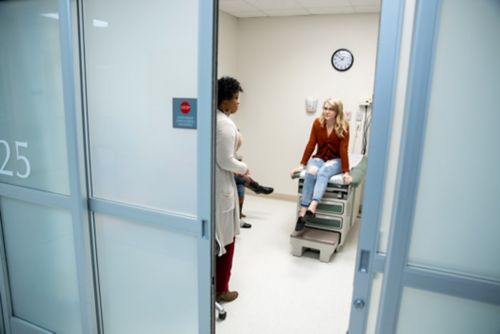What is a survivorship care plan?
A survivorship care plan includes information about disease, treatment, and long-term health care needs. People who have had cancer or stem cell transplants (also called bone marrow transplants or hematopoietic cell transplants) receive survivorship care plans.
A survivorship plan includes:
- A summary of treatment
- Needed screenings and follow-up tests
- Possible long-term side effects
- Treatment-related conditions that could happen later
Why a survivorship care plan is important
If you had chemotherapy, radiation, or a stem cell transplant, you may have unique health care needs for the rest of your life. A survivorship care plan will help you work with your health care providers to meet those needs.
Childhood cancers and blood disorders are rare. Primary care health providers may only see 1 or 2 people with this health history during their careers.
Providers may not be familiar with the late effects of treatment. Late effects are conditions that happen months or years after therapy. You may need certain health screenings earlier or more often than other people.
Your treatment center can give you a survivorship care plan. You should get an updated copy each time you visit your long-term follow-up care clinic.
How to use your survivorship care plan
You should share your survivorship care plan with:
- Primary care providers
- Dentists
- Eye doctors
- Counselors
- Chiropractors
- Other health care providers
Survivorship care plans may change over time. Share your plan each time you visit a provider.
What a survivorship care plan includes
Each plan is specific to that patient.
Treatment summary
The summary of treatment contains:
- Disease details
- Dates of treatment start and finish
- Treatment details
- Clinical support services provided
- Contact details for treatment center
- Names of the main point of contact and care coordinator
Plan for follow-up care
The follow-up care plan may include:
- Ways to manage treatment side effects
- Schedules of screenings and exams or tests
- Possible late and long-term effects of treatment
- Potential effects on family relationships, school, and work
- Referral for family and employment support
- Educational, insurance, employment, and financial concerns
- Referrals for financial and legal aid
- Suggestions for healthy lifestyles, such as nutrition and physical activity
- Genetic counseling and testing
- Referrals to specialists
- Disease-related resources
Online care plan tools
Some organizations have online tools to help create survivorship care plans. These include:
Talk with your doctor before using one of these tools.
Questions to ask about survivorship care plan





